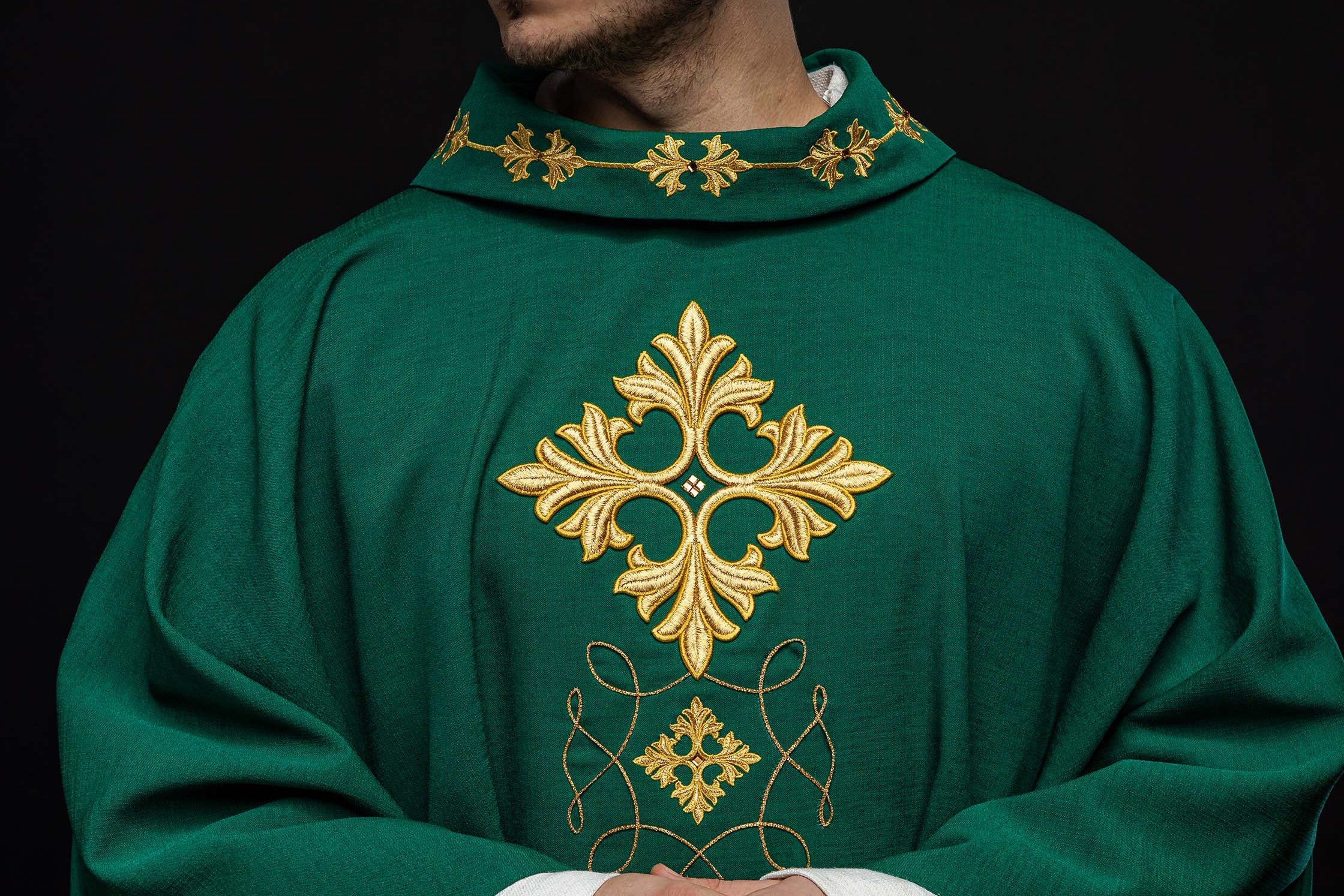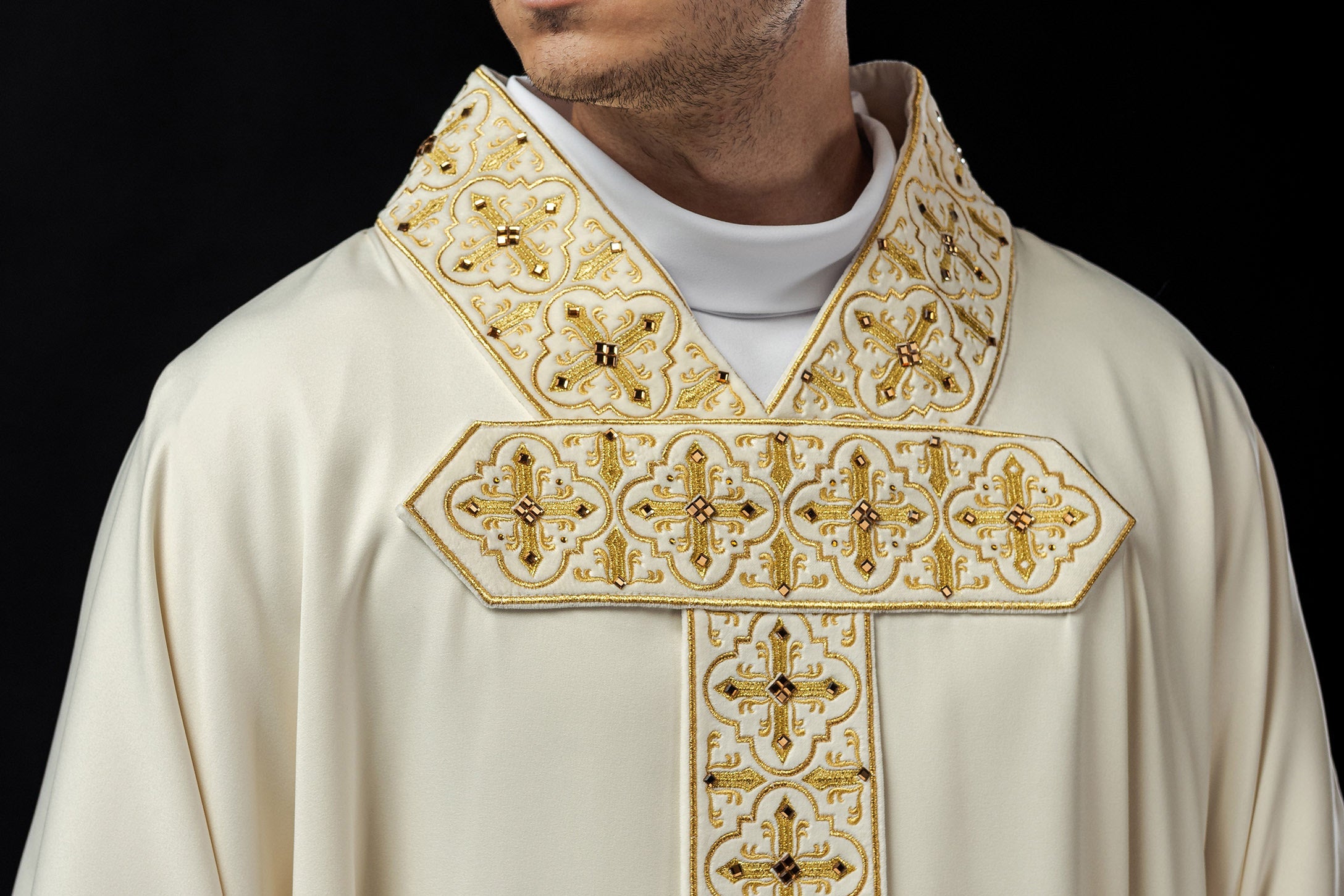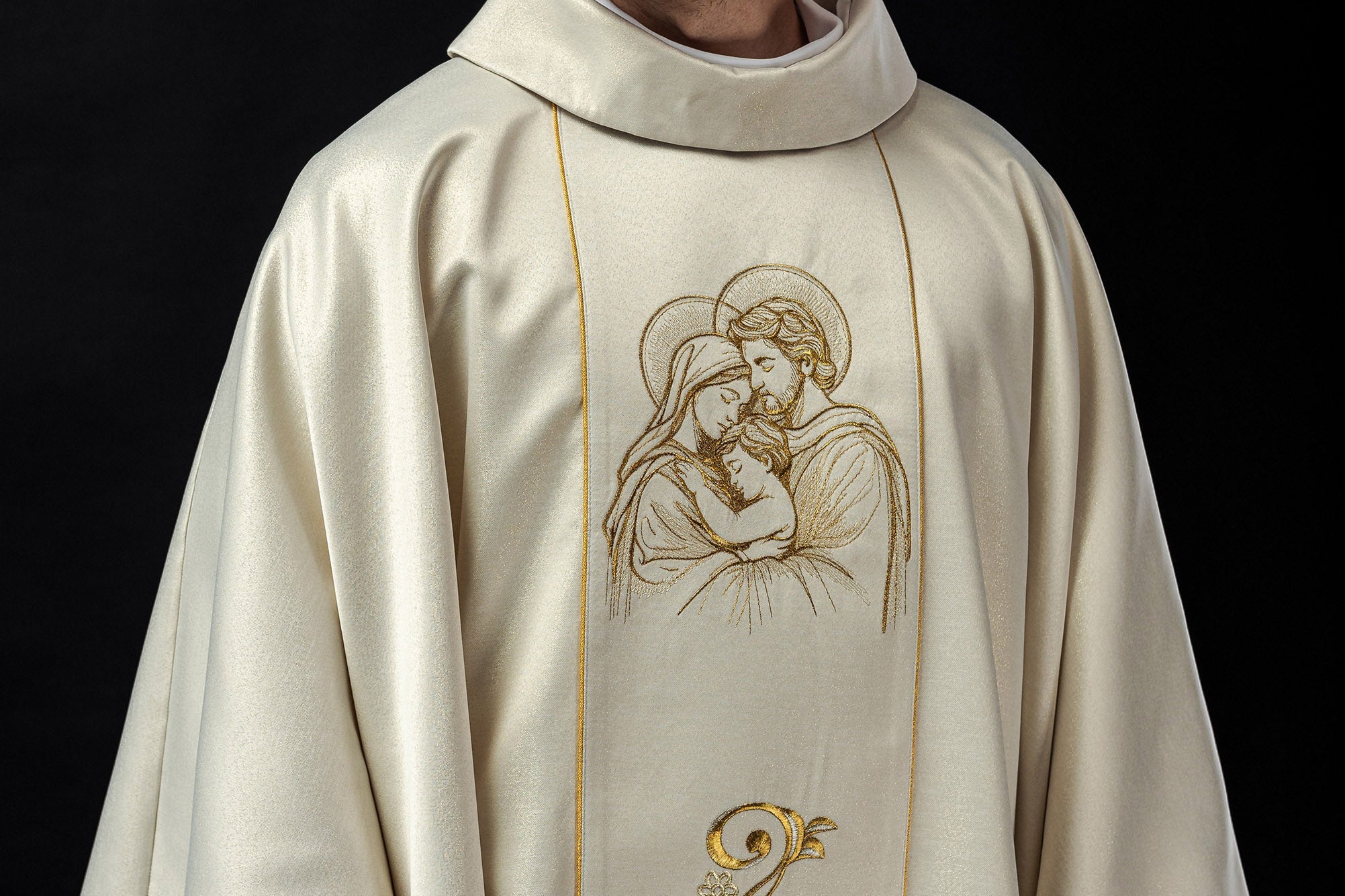
How to Restore Liturgical Vestments: Alterations and Maintenance
How to Renovate Liturgical Vestments – Alterations and Maintenance
Take care of the beauty and durability of liturgical vestments
Liturgical vestments, such as chasubles, stoles, copes, and albs, are an integral part of religious ceremonies. Their unique character, rich embroidery, and noble fabrics make them not only clothing but also a testament to faith and tradition. Over the years, even the best-made vestments can become damaged – tears, stains, embroidery damage, or they may simply not meet changing liturgical or aesthetic needs. In such situations, the key is to take the right approach to their renovation, alterations, and maintenance. HAFTINA Textile Group, as an experienced manufacturer and distributor of liturgical articles, perfectly understands the importance of preserving these valuable items in impeccable condition.
Why is it worth renovating liturgical vestments?
Investing in the renovation of liturgical vestments is not only an economical solution but, above all, a way to honor their history and significance. Renovated vestments can serve for many years, passing on tradition to future generations of priests and clergy. In addition, appropriate alterations can adapt the vestments to contemporary liturgical requirements, providing greater comfort or updating their appearance.
Maintenance of liturgical vestments – the key to longevity
The basis for renovating vestments is their proper maintenance. This prevents the formation of hard-to-remove damage and facilitates subsequent renovation work.
- Storage: Liturgical vestments should be stored in a dry, airy place, away from direct sunlight, which can cause colors to fade. It is best to store them in dedicated covers that protect against dust and moisture.
- Cleaning: For most vestments, especially those decorated with embroidery, stones, or made of delicate fabrics (silk, velvet), professional dry cleaning is recommended. Delicate materials such as linen or cotton can be hand-washed at a low temperature, using mild detergents, but it is always worth checking the manufacturer's recommendations. Avoid aggressive bleaching agents and strong spinning.
- Stain removal: Stains should be removed as soon as possible, using gentle methods. For organic stains (e.g., wax, wine), you can try to gently collect the excess and then use an appropriate fabric stain remover, always testing it on an invisible area.
- Ironing: Vestments should be ironed at the lowest possible temperature, preferably through an additional protective fabric. Avoid direct contact of the hot iron with embroidery, stones, or delicate fabrics. Chasubles and copes often have decorative stripes that require special care when ironing.
Alterations of liturgical vestments – when and how?
Alterations of liturgical vestments can concern various aspects, from size changes to modifying the cut or adding new decorative elements.
- Size adjustment: Over time, the clergyman's figure may change. Vestments can be easily shortened or widened while maintaining their original appearance and embroidery pattern. It is worth entrusting this task to a tailor specializing in working with delicate materials and embroidery.
- Changing the cut style: Although this is usually not recommended due to the preservation of the historical character, it is sometimes possible to adjust the cut of the vestment, e.g., changing the width of the sleeves or collar, although this is a task that requires great precision and knowledge of the cut of the vestment.
- Embroidery refreshment: Damaged or faded embroidery can be renewed or replaced with new ones. HAFTINA offers a wide selection of ready-made computer embroidery motifs, as well as the possibility of making individual embroidery, e.g., with a coat of arms or dedication. However, these works require specialized equipment and skills, so it is best to entrust them to professionals.
- Adding decorations: Sometimes, to give the vestment a new character or adapt it to a special occasion, new decorative elements can be added, e.g., natural stones, decorative stripes, or edgings. It is important that they are consistent with the spirit of the liturgy and the aesthetics of the other elements of the vestment.
- Changing the color of the lining or edging: Sometimes a simple change in the color of the edging or lining can refresh the appearance of the vestment, especially when the original elements have been damaged or faded.
Embroidery renovation – the art of restoring brilliance
Embroidery is often the most expressive and valuable element of liturgical vestments. Its renovation requires particular delicacy and precision.
- Assessment of the embroidery condition: Before starting work, the condition of the embroidery should be carefully assessed – whether the threads are broken, whether the color has faded, or whether there is damage to the backing.
- Strengthening the embroidery: Sometimes it is enough to strengthen the embroidery backing or gently sew loose threads.
- Restoring the embroidery: In the event of more serious damage, an attempt can be made to restore the embroidery. It is best if it is possible to find the original pattern or use the services of a company that specializes in liturgical embroidery, such as HAFTINA. The possibility of making computer embroidery using original or similar threads allows you to restore the original appearance.
- Enriching with embroidery: In the case of simpler vestments, you can consider adding new, richer embroidery to give them a more solemn character. This is an excellent opportunity for personalization, e.g., by adding the priest's initials, the date of an important event, or a religious symbol referring to the patron saint.
Specialized renovation services at HAFTINA
HAFTINA Textile Group offers not only high-quality new liturgical vestments but also support in their renovation. Although this is not always a service directly available in the standard store offer, thanks to our production experience, we can advise on the best methods of renovation and alteration, as well as refer you to proven partners specializing in this type of work. The possibility of making new embroidery, selecting appropriate fabrics, and providing expert advice are advantages that help restore the former glory to even the most damaged vestments.
When should you consider purchasing new vestments?
Although renovation is often the best and most economical solution, there are situations when purchasing new liturgical vestments is more justified. This is especially true when vestments are irreparably damaged, made of very low-quality materials, or when the style of the vestment is completely inadequate to contemporary liturgical and aesthetic needs. HAFTINA Textile Group offers a wide selection of modern and traditional chasubles, stoles, albs, and other vestments, made of the highest quality materials, with attention to every detail of the embroidery. These are proposals that can be an excellent supplement or replacement for older vestments, guaranteeing a beautiful appearance and comfort of use.
Summary – an investment in tradition and quality
Renovating liturgical vestments is a process that requires knowledge, patience, and precision. Both proper maintenance and thoughtful alterations can significantly extend the life of these unique elements of church equipment. Remember to treat the materials gently, use appropriate cleaning and ironing methods, and in the case of more complex work, such as embroidery renovation or significant alterations, always use the services of professionals. HAFTINA Textile Group is here to help and provide expert advice on caring for liturgical vestments, also offering a rich assortment of new products made with passion and attention to detail. Preserving the beauty of liturgical vestments is an investment in tradition, spirituality, and quality that pays off for years.
```




